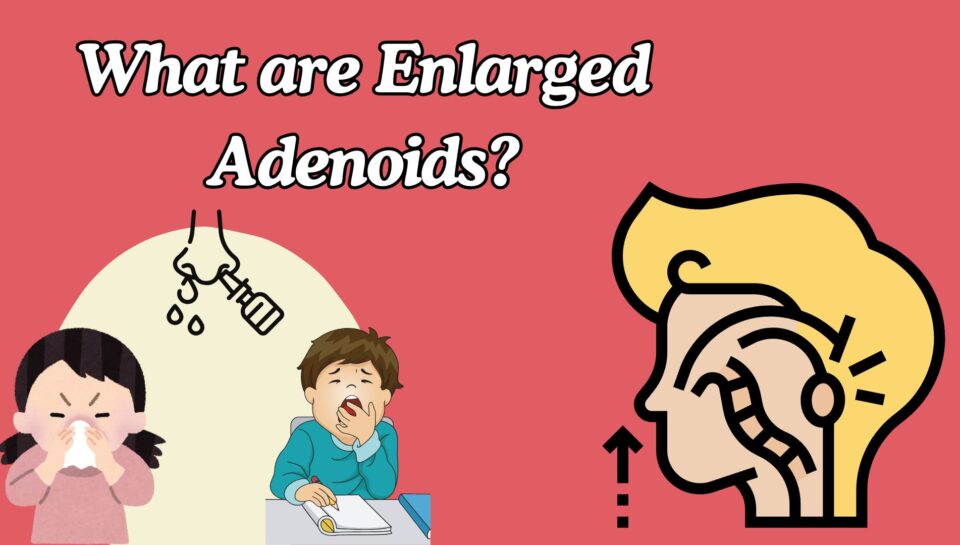What Are Enlarged Adenoids? Understanding Symptoms, Causes, and Treatment Options
When it comes to breathing difficulties or noisy breathing in children, enlarged adenoids are often an overlooked cause. These small glands located at the back of the nasal passage play a role in the immune system, especially during childhood. However, when adenoids remain enlarged for a long time, they can lead to a range of health issues, including facial deformities, snoring, obstructive sleep apnea and even hearing loss.
What Causes Enlarged Adenoids?
Adenoids typically grow until a child is around 5 to 7 years old and begin to shrink during adolescence. However, some children develop persistently enlarged adenoids due to:
- Chronic infections
- Allergies, such as Allergic Rhinitis
- Environmental irritants (e.g., tobacco smoke, pollution)
- Genetic predisposition
Children with allergic rhinitis, which causes inflammation in the nasal passages due to allergens like dust mites or pollen, are especially prone to enlarged adenoids.
Common Symptoms of Enlarged Adenoids
Enlarged adenoids can obstruct the nasal passages, leading to various symptoms, including:
- Persistent snoring >3 nights per week is considered significant for Obstructive sleep apnea
- Mouth breathing, especially at night, drooling of saliva
- Nasal-sounding speech
- Recurrent ear infections and discharging ear
- Difficulty swallowing
- Facial changes, dental deformities and halitosis due to persistent mouth breathing
- Restless sleep or obstructive sleep apnea (poor quality sleep)
Adenoid Facies
Key Features of Adenoid Facies
- Elongated Face: The face appears longer and narrower than usual.
- Open Mouth: Chronic mouth breathing leads to a consistently open mouth posture.
- Short Upper Lip: The upper lip appears shorter due to the mouth’s open position.
- High-Arched Palate: The roof of the mouth is more arched than normal.
- Prominent Upper Teeth: The upper front teeth may protrude.
- Pinched Nostrils: The nostrils may appear pinched or narrowed.
- Dull Facial Expression: The face may have a less expressive or tired appearance
Enlarged Adenoids and Obstructive Sleep Apnea
One of the most concerning complications of enlarged adenoids is obstructive sleep apnea (OSA). OSA occurs when the airway becomes blocked during sleep, often due to enlarged tonsils or adenoids. This can cause interrupted breathing and oxygen falls in sleep, increased heart rate, poor sleep quality, daytime fatigue, and behavioral issues in children.
Treatment Options
Treatment depends on the severity of the symptoms:
1. Medical Management
For mild cases or those linked to allergic rhinitis, doctors may recommend:
- Nasal steroid sprays are the mainstay of controlling allergic nasal symptoms
- Antihistamines either nasally or orally may be required in severe cases
2. Surgical Treatment – Adenoidectomy
Surgery to remove adenoids (Adenoidectomy) is recommended only if enlarged adenoids are causing complications like Obstructive sleep apnea, facial deformities or hearing loss. This surgical procedure involves removing the adenoids and is often done under general anesthesia. Adenoidectomy is commonly performed alongside tonsil removal (tonsillectomy), particularly in children with both enlarged tonsils and adenoids contributing to breathing problems.
Children are advised to continue nasal steroid sprays for sometime after the surgery and maintain a regular follow up with the allergy specialist.
Conclusion
Enlarged adenoids may seem like a small issue, but they can have a big impact on your child’s quality of life—especially when linked to snoring, allergic rhinitis, and obstructive sleep apnea. If your child is experiencing these symptoms, it’s important to speak with a pediatric pulmonologist. In some cases, a simple adenoidectomy can offer significant relief and restore restful sleep.




